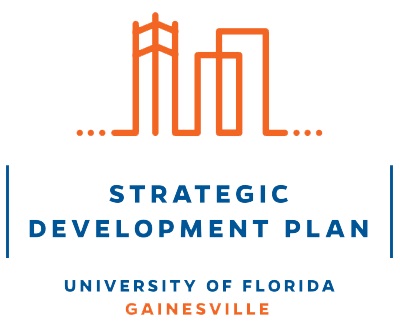 At a public forum held on Monday, May 2, UF leaders and representatives of the Elkus Manfredi and Dumont Janks consulting firms shared with approximately 60 attendees the results of the CoMap survey conducted for two weeks in April. More than 2,200 faculty, staff, students and community members completed the survey, which asked participants to place icons to indicate where they live, work and socialize as well as to outline their typical transportation routes.
At a public forum held on Monday, May 2, UF leaders and representatives of the Elkus Manfredi and Dumont Janks consulting firms shared with approximately 60 attendees the results of the CoMap survey conducted for two weeks in April. More than 2,200 faculty, staff, students and community members completed the survey, which asked participants to place icons to indicate where they live, work and socialize as well as to outline their typical transportation routes.
The survey yielded the placement of approximately 60,000 icons indicating where people eat, shop and live—with retail and restaurant locations noted largely in the downtown area and along Archer Road. Transportation patterns clearly indicated heavy traffic flowing to and from the west side of Gainesville, with the heaviest bicycle and pedestrian use in and around campus.
The results also demonstrated the community’s strong sense of connection with outdoor areas, including such locations as Devil’s Millhopper Geological State Park, the La Chua Trail in Paynes Prairie Preserve and Lake Wauburg. The consultants noted this was a unique aspect of Gainesville that distinguishes it from comparable communities.
The gathering of data from the CoMap survey marks the completion of the “analysis and visioning” phase of UF’s Strategic Development Plan initiative, which aims to identify ways to create a physical environment conducive to preeminence by determining what makes a great university town. Over the summer, the university’s administration will undertake phase two of the plan, in which it will develop strategies and objectives while further engaging the Gainesville community. Next fall, the third phase of the initiative will be devoted to finalizing the Strategic Development Plan.
